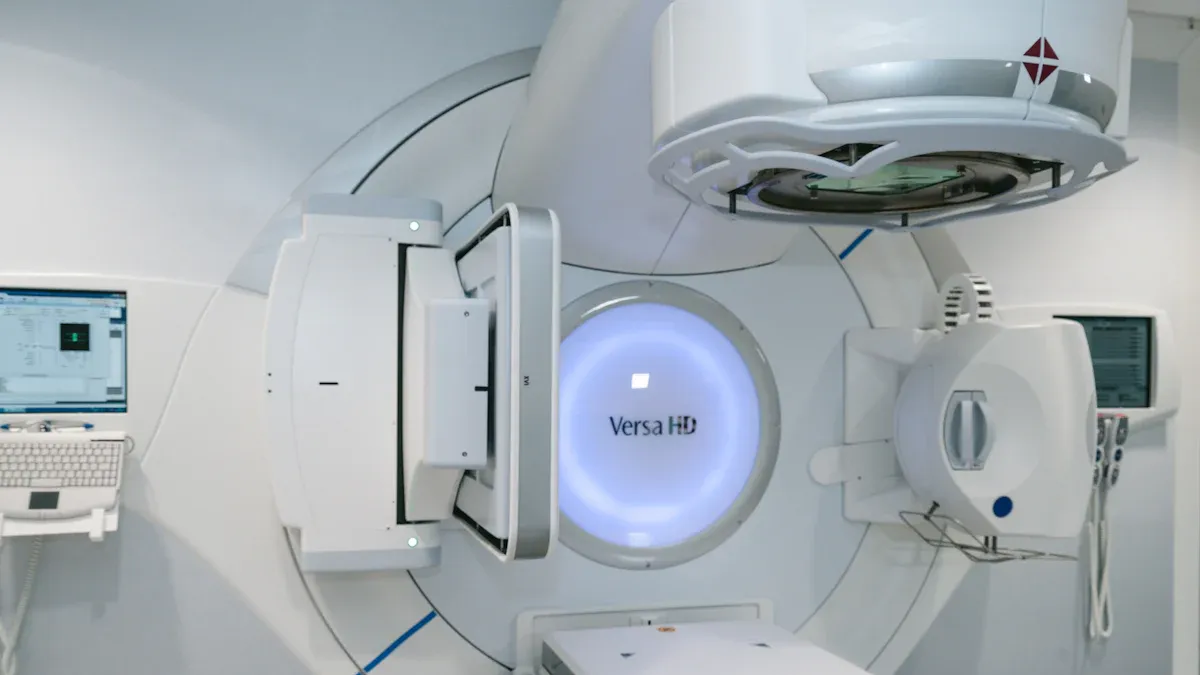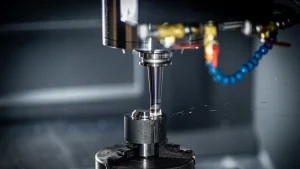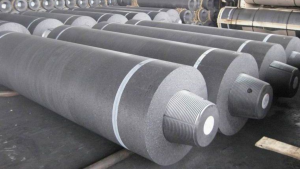
TAC coating represents a breakthrough in medical technology. This specialized material improves the durability, biocompatibility, and anti-corrosion properties of medical devices. Using CVD TaC Coating Technology, manufacturers achieve a uniform and robust layer that enhances device performance. The growing TAC Coatings Market highlights its importance. This innovation stems from advanced cvd tac coating processes, which ensure precision and reliability. TAC Coating Technology continues to revolutionize healthcare by addressing critical performance challenges.
Key Takeaways
- TAC Coating makes medical devices stronger, safer, and last longer.
- It stops germs, reducing infections during treatments and helping patients heal.
- TAC Coating is better than PVD and hydrophilic coatings. It is harder and works well for a long time.
TAC Coating: Definition and Properties
What is TAC Coating?
TAC Coating, short for Tantalum Carbide Coating, is a thin, protective layer applied to medical devices. This coating enhances the performance and longevity of devices by providing superior resistance to wear, corrosion, and microbial growth. Manufacturers use advanced chemical vapor deposition (CVD) techniques to create a uniform and durable layer. TAC Coating has gained recognition for its ability to meet the stringent demands of the medical field, ensuring both reliability and safety.
Composition and Structure
TAC Coating consists primarily of tantalum and carbon atoms. These elements bond to form a carbide compound with exceptional hardness and stability. The coating’s structure features a dense, crystalline arrangement that resists physical and chemical degradation. This unique composition allows it to withstand extreme conditions, such as high temperatures and exposure to bodily fluids. The precise application process ensures a consistent thickness, which is critical for maintaining device functionality.
Unique Properties of TAC Coating
TAC Coating offers several unique properties that set it apart from other materials. Its high hardness improves wear resistance, reducing the risk of device failure over time. The coating’s biocompatibility ensures it does not trigger adverse reactions in patients, making it ideal for implants and surgical tools. Additionally, its anti-corrosion properties protect devices from damage caused by moisture or chemicals. TAC Coating also exhibits antimicrobial characteristics, which help prevent infections during medical procedures. These features make it a versatile and valuable innovation in healthcare.
Enhanced Performance Metrics with TAC Coating

Durability and Wear Resistance
TAC Coating significantly enhances the durability of medical devices. Its exceptional hardness protects devices from wear and tear during prolonged use. This feature is especially important for surgical instruments and implants, which endure constant mechanical stress. The coating’s dense structure minimizes surface damage, ensuring devices maintain their functionality over time. By reducing wear, TAC Coating extends the lifespan of medical tools, making them more reliable and cost-effective.
Biocompatibility and Patient Safety
Biocompatibility is a critical requirement for medical devices. TAC Coating meets this need by preventing adverse reactions in patients. Its inert nature ensures compatibility with human tissues, reducing the risk of inflammation or rejection. This property makes it ideal for implants and prosthetics. Additionally, the coating’s smooth surface minimizes irritation, enhancing patient comfort. By prioritizing safety, TAC Coating supports better clinical outcomes and patient well-being.
Anti-Corrosion Benefits
Corrosion can compromise the performance of medical devices, especially those exposed to bodily fluids. TAC Coating provides a robust barrier against corrosion, protecting devices from chemical degradation. This resistance ensures that tools and implants remain functional in challenging environments. The anti-corrosion properties also reduce maintenance requirements, improving the overall efficiency of medical equipment.
Antimicrobial Properties
Infections pose a significant risk during medical procedures. TAC Coating addresses this challenge with its antimicrobial properties. The coating inhibits the growth of harmful microorganisms on device surfaces. This feature reduces the likelihood of infections, particularly in surgical settings. By enhancing sterility, TAC Coating contributes to safer healthcare practices and improved patient outcomes.
TAC Coating vs. Other Coatings
Comparison with PVD Coating
Physical Vapor Deposition (PVD) coating is widely used in various industries, including medical technology. It provides a thin, durable layer that enhances wear resistance. However, TAC Coating surpasses PVD in several aspects. TAC Coating offers superior hardness and a denser structure, which ensures better protection against mechanical stress. Unlike PVD, it also provides exceptional anti-corrosion and antimicrobial properties. These features make TAC Coating more suitable for medical devices that require high performance and patient safety.
Comparison with Hydrophilic Coating
Hydrophilic coatings are designed to reduce friction and improve the wettability of medical devices. While they excel in applications like catheters and guidewires, they lack the durability and chemical resistance of TAC Coating. TAC Coating not only withstands harsh environments but also maintains its performance over time. Its biocompatibility and antimicrobial properties further enhance its utility in implants and surgical tools. Hydrophilic coatings, on the other hand, may degrade faster and require more frequent replacement.
Advantages of TAC Coating
TAC Coating combines the best features of other coatings while addressing their limitations. Its unique properties, such as high hardness, biocompatibility, and anti-corrosion capabilities, make it a versatile choice for medical devices. Unlike PVD and hydrophilic coatings, it offers long-term reliability and enhanced patient safety. These advantages position TAC Coating as a leading innovation in the medical field, ensuring better outcomes for both healthcare providers and patients.
Applications of TAC Coating in Medical Devices

Implants and Prosthetics
TAC Coating plays a vital role in enhancing the performance of implants and prosthetics. Its biocompatibility ensures that devices integrate seamlessly with human tissues, reducing the risk of rejection or inflammation. The coating’s anti-corrosion properties protect implants from degradation caused by bodily fluids, ensuring long-term functionality. Additionally, its antimicrobial characteristics minimize the risk of infections, which is crucial for devices that remain inside the body for extended periods. By improving durability and safety, TAC Coating supports better outcomes for patients relying on implants and prosthetics.
Surgical Instruments
Surgical instruments benefit significantly from TAC Coating due to its wear resistance and durability. These tools often face mechanical stress during procedures, which can lead to surface damage. TAC Coating prevents wear and tear, ensuring instruments maintain their precision and reliability over time. Its smooth surface also enhances sterility, reducing the likelihood of microbial contamination. Surgeons rely on coated instruments for their consistent performance, which contributes to safer and more effective surgeries.
Catheters and Disposable Devices
Catheters and disposable medical devices require coatings that enhance functionality while maintaining cost-effectiveness. TAC Coating improves these devices by providing a protective layer that resists corrosion and microbial growth. Its biocompatibility ensures patient safety during use, while its durability reduces the risk of device failure. Although disposable devices are designed for single use, TAC Coating ensures they perform optimally during critical procedures. This innovation supports the reliability of essential medical tools.
Research Validating TAC Coating
Key Studies on TAC Coating Benefits
Several studies highlight the transformative impact of TAC Coating on medical devices. Researchers have demonstrated its ability to enhance durability, biocompatibility, and antimicrobial properties. A study published in the Journal of Biomedical Materials Research revealed that devices coated with tantalum carbide exhibited a 40% increase in wear resistance compared to uncoated devices. Another investigation focused on its antimicrobial effects, showing a significant reduction in bacterial adhesion on coated surfaces. These findings underscore the importance of TAC Coating in improving device performance and patient safety.
Testing Methods for Performance Metrics
Scientists employ rigorous testing methods to evaluate the performance of TAC Coating. Hardness tests, such as nanoindentation, measure the coating’s resistance to mechanical stress. Corrosion resistance is assessed using electrochemical techniques, which simulate exposure to bodily fluids. Biocompatibility tests involve cell culture studies to ensure the coating does not trigger adverse reactions. These methods provide reliable data on the coating’s effectiveness, ensuring it meets the stringent requirements of the medical field.
Research on Biocompatibility and Longevity
Biocompatibility and longevity are critical for medical devices, especially implants. Research confirms that TAC Coating excels in both areas. Studies show that its inert nature prevents inflammation and tissue rejection. Long-term evaluations reveal that the coating maintains its integrity even after years of use. This durability ensures that devices remain functional and safe, reducing the need for replacements. By addressing these key factors, TAC Coating supports better outcomes for patients and healthcare providers alike.
Challenges and Future Directions for TAC Coating
Current Limitations in TAC Coating Technology
Despite its advantages, TAC Coating faces certain limitations. The production process requires advanced equipment and expertise, which increases manufacturing costs. This challenge makes it less accessible for smaller medical device manufacturers. Additionally, the coating’s application process demands precise control to ensure uniformity. Any deviation can compromise the coating’s performance. Researchers also note that while TAC Coating offers excellent durability, it may not perform as effectively in highly dynamic environments, such as joints in motion. Addressing these limitations remains a priority for the industry.
Innovations in TAC Coating Development
Ongoing innovations aim to overcome the current challenges of TAC Coating. Scientists are exploring cost-effective methods to streamline the production process. For instance, advancements in chemical vapor deposition techniques could reduce manufacturing expenses while maintaining quality. Researchers are also investigating hybrid coatings that combine TAC with other materials to enhance flexibility and performance. These developments could expand the coating’s applications and improve its adaptability to various medical devices. Collaboration between material scientists and medical professionals continues to drive progress in this field.
Future Applications in Medical Devices
The future of TAC Coating in medical devices looks promising. Its unique properties make it suitable for next-generation implants, such as those used in robotic-assisted surgeries. Researchers are also exploring its potential in wearable medical devices, where durability and biocompatibility are critical. Another exciting area involves its use in drug delivery systems, where the coating could protect sensitive medications from degradation. As technology advances, TAC Coating is expected to play a pivotal role in shaping the future of healthcare.
TAC Coating has revolutionized medical device performance by improving durability, biocompatibility, and anti-corrosion properties. Research highlights its transformative role in advancing healthcare technology. As scientists refine its application and explore new possibilities, TAC Coating is set to become a cornerstone of future medical innovations, ensuring safer and more reliable devices for patients worldwide.
FAQ
What makes TAC Coating unique compared to other medical device coatings?
TAC Coating offers unmatched durability, biocompatibility, and anti-corrosion properties. Its antimicrobial benefits and resistance to wear make it superior for medical applications.
Is TAC Coating safe for use in implants?
Yes, TAC Coating is biocompatible. It integrates seamlessly with human tissues, reducing risks of inflammation or rejection, ensuring safety for long-term implant use.
How does TAC Coating improve patient outcomes?
TAC Coating enhances device reliability and safety. Its antimicrobial properties reduce infection risks, while its durability ensures consistent performance, leading to better clinical results.





